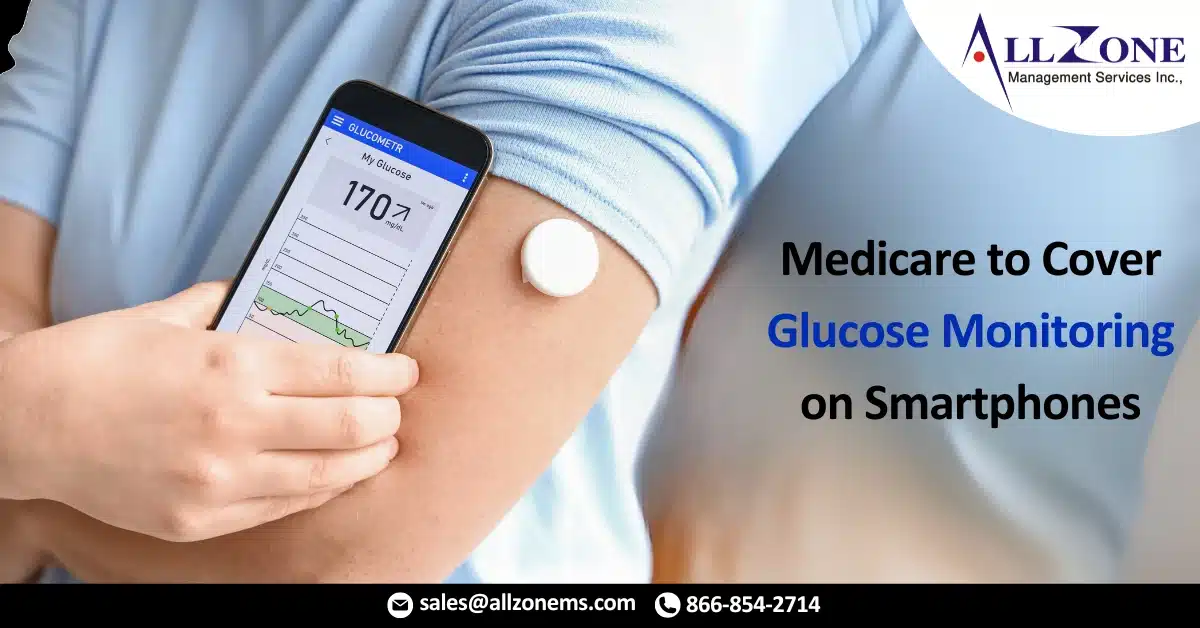The Centers for Medicare & Medicaid Services (CMS) is modifying its Medicare coverage policy for continuous glucose monitors (CGMs) to support their use in conjunction with smartphones, including the data sharing function CGMs provide. Medicare coverage of therapeutic CGMs began in January 2017, but the policy limited their use in conjunction with smartphones. CMS is removing this limitation in response to feedback from patients and other stakeholders. Keep a lookout for a revised policy article from your Durable Medical Equipment Medicare Administrative Contractor (DME MAC), announcing the effective date of this policy change for Medicare.
What is CGM?
CGMs are FDA-approved systems that enable diabetic patients to track their blood glucose (sugar) levels 24/7. Continuous monitoring can help detect patterns for when a patient’s blood glucose levels spike or dip, which can assist physicians in managing the patient’s diabetes.
For patients, CGMs mean:
- Better management of their glucose levels;
- Fewer low blood glucose emergencies; and
- Fewer finger sticks.
How CGM Works:
A tiny sensor is placed under the skin somewhere on the patient’s body — usually the abdomen, back, or arm. A transmitter on the wireless sensor sends data to a monitor (receiver), which may or may not be part of an insulin pump. The monitor (about the size of a pager) displays the patient’s glucose levels at various intervals, depending on settings. Some CGMs can send information directly to an electronic device such as a smartphone — effectively making the patient’s smartphone the monitor.
Only the Dexcom G5 Mobile and G6 CGM Systems are approved for treatment decisions (at this writing). This means physicians can make changes to their patients’ diabetic care plans based on CGM results alone. All other models require a finger-stick blood glucose test to confirm the data.
The sensor must be replaced every 6-7 days. Standard monitors have a 3-year life expectancy.
Who is covered for a CGM?
CGMs are useful for adults and children with type 1 diabetes who are on intensive insulin therapy, have hypoglycemia unawareness, or often experience high or low blood glucose levels.
A physician may prescribe a CGM system for a diabetic patient for long-term use or for just a few days to help adjust the patient’s diabetes care plan. Research shows patients who use a CGM every day or nearly every day benefit most, according to the National Institute of Diabetes and Digestive and Kidney Diseases.
Documenting Medical Necessity:
Coverage of home blood glucose monitors is limited to patients meeting the following conditions:
The patient has been diagnosed as having diabetes;
The patient’s physician states that the patient is capable of being trained to use the particular device
prescribed in an appropriate manner. In some cases, the patient may not be able to perform this
function, but a responsible individual can be trained to use the equipment and monitor the patient to
assure that the intended effect is achieved. This is permissible if the record is properly documented by
the patient’s physician; and
The device is designed for home rather than clinical use.
Medical Coding and Billing CGM Systems for Medicare:
CMS added two HCPCS Level II codes for CGM, which are effective for claims on or after July 1, 2017:
K0553 Supply allowance for therapeutic continuous glucose monitor (CGM), includes all supplies and accessories, 1 unit of service = 1 month’s supply
K0554 Receiver (Monitor), dedicated, for use with therapeutic continuous glucose monitor system
The 2017 statewide fee schedule amounts for new durable monitor for a therapeutic CGM range from $236 to $277. The fee schedule amount for used equipment is based on 75 percent of the fee schedule amounts for purchase of new equipment. And the fee schedule amount for monthly rental of the equipment is based on 10 percent of the fee schedule amounts for purchase of new equipment. Total payments for the equipment cannot exceed the fee schedule amount for new equipment. Medicare also pays for replacement of essential accessories, including the sensors, transmitters, batteries, etc.
For more information: CLICK HERE

